Mike recently asked me about the volume of notorious crimes in Arkansas. Our state’s history is rich with stories about politicians, desperados, gunslingers of all sorts, feuds, mass murders, war reconstruction, Wild West and Depression Era outlaws, and modern monsters.
Pretty much all of the gangs of the 1930s were in Arkansas at one time or another. John Dillinger only made one stop here that we know of. He and his gang were arrested in Tucson, while there on vacation (even crooks need R&R), and the gang members were transported back to their stomping grounds by train, but John (being the rock star of the time) was flown back in a Ford Tri-Motor, that landed at the Little Rock Airport for fuel. Dillinger was asked if he wanted to deplane for a bit and said no, until an airport worker spilled gas on him, and then he changed his mind. Six large, Little Rock Police Detectives, led by the Chief of Detectives, made sure he did not stay in Arkansas.
A FAMILY AFFAIR
Our story now deals with a family that grew up in the Ozarks, and gained fame not through good, but by evil.
Let’s meet the Barkers.
George Barker, of Stone County, Missouri, met a girl in Lawrence County, Missouri, and asked her to get married. Her name was Arizona Donnie Clark, and she was from Greene County, Missouri. She had a reputation as being hard-headed and bad-tempered, so George could have probably used some advice in selecting a wife.
The Barkers moved around southwest Missouri, wherever George could find work to support his growing family. They had four sons: Herman (1893); Lloyd (1897); Arthur (“Doc”–1899), and; The baby, Freddie (1901).
The boys got into trouble at a very early age, starting with pranks, vandalism, and petty crimes. At the time, the family was living in the town of Aurora, Missouri. The officers in the town got to know the Barkers well, and their Ma really well. She constantly complained about the police “harassing her poor boys.” After a few years, she first convinced George to move to Webb City, Missouri, and then to Tulsa, Oklahoma. Even after that, the police “harassment” continued to occur on a regular basis.
TROUBLE IN TULSA
Maybe things would be better in Tulsa, because Ma’s stepfather and mother lived there, and her stepdad had once been a police officer, and was now a Tulsa County Deputy Sheriff. The Barkers moved back to Stone County, Missouri, and then returned to Tulsa, where they moved into a home on Cincinnati Avenue.
By this time, three of the four sons were absent. Herman was in the Pen, in Minnesota, and Doc was in jail. Lloyd enlisted in the Army and served as a cook. He was discharged as a sergeant in 1919, and it did not take him long to get in trouble. In 1921, he robbed a U.S. mail carrier in Baxter Springs, Kansas, and was sent to Leavenworth Federal Pen. He was released in 1938. He went back into the army, and served again as a cook, until WWII was over and he was discharged. He worked as an assistant manager and cook at a bar & grill in Denver, Colorado, married a woman with kids, and stayed out of trouble. Trouble found him, though–In 1949, as he was walking up to his front porch, his wife shot him in the head with a shotgun. Lloyd was buried in Colorado.
Back in Tulsa, the Barkers’ home became a hangout for a gang of young men known as the Central Park Gang. The group was involved in burglaries, car thefts and other stealing. The membership rolls of this bunch of young criminals contained many names that would become known for being more vicious and deadly as they aged.
END OF THE ROAD
Big brother Herman had gotten out of the Minnesota Pen, and served time in the Missouri and Montana State Pens, also. While on an excursion with his girlfriend in Wyoming, he had an occasion to kill a Laramie County deputy sheriff named Arthur Osborn.
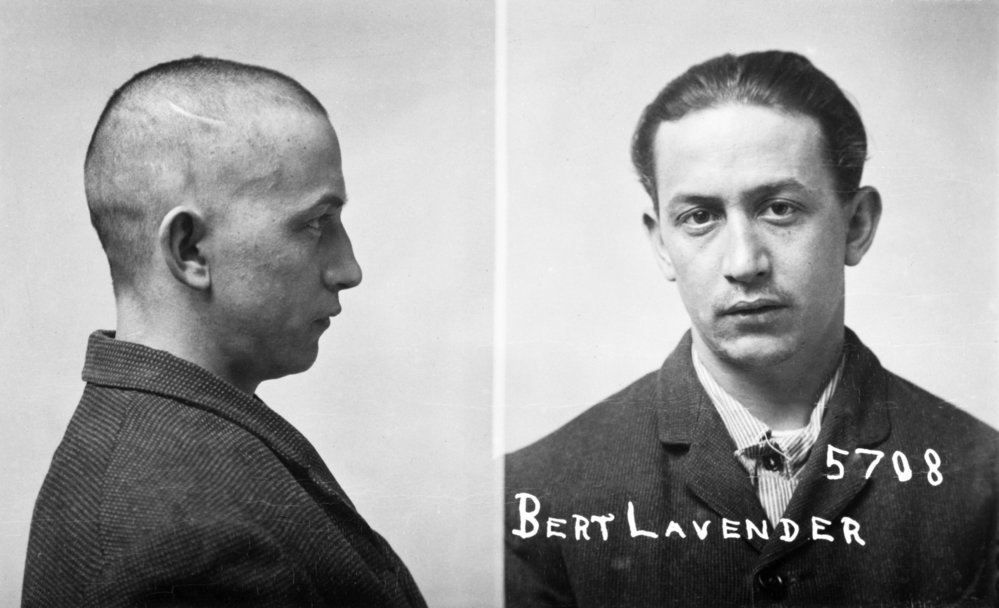
After laying low for a bit, Herman went back to work by robbing an ice plant in Newton, Kansas. Stopped by the Wichita Police Department, Barker resisted with gunfire. Wichita Police Department Officer Joseph E. Marshall, was shot and killed, and his partner Frank Bush was wounded. Bush returned fire and wounded Barker and one of his partners. Barker, behind the wheel, took off, but lost control of the vehicle and wrecked it a short distance away. The wounded Barker staggered out of the wrecked car, sat down, and shot himself in the temple. George and Ma buried Herman in the Timberhill Cemetery in Welch, Oklahoma.
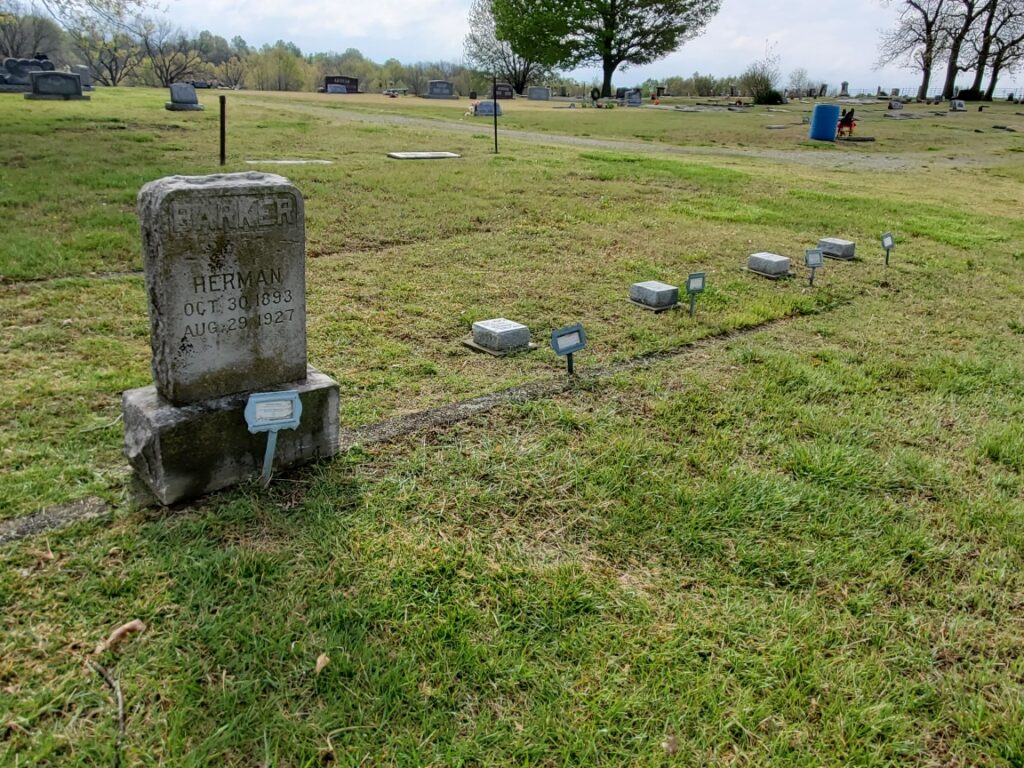
WEAVING A BAD STORY
Back in Tulsa, things were not going well. The loss of her oldest son, financial trouble, and the police harassing her remaining boys, had Ma in a bad frame of mind. George finally had enough, and left.
The Central Park Gang was still very active and were sharpening their criminal skills every day. Some names associated with the group included Lawrence DeVol, Harry Campbell, Ray Terrill, “Burhead” Keady, and others.
One fellow, who went by the name William Weaver (and had many aliases, including Lapland Willie, and Phoenix Donald), became a prominent member of the Barker gang. He served time at McAlister State Prison, in Oklahoma, at the same time Doc was incarcerated there for the murder of a watchman, at the construction site of a new hospital, in Tulsa. Weaver was also serving life, for the murder of Drumright, Oklahoma, Police Officer Ulysses. S. Lenox, and the wounding of Drumright’s Chief of Police, “Fighting Jack” Ary, in a gun battle that followed a bank robbery in Avery, Oklahoma, on July 2, 1924.
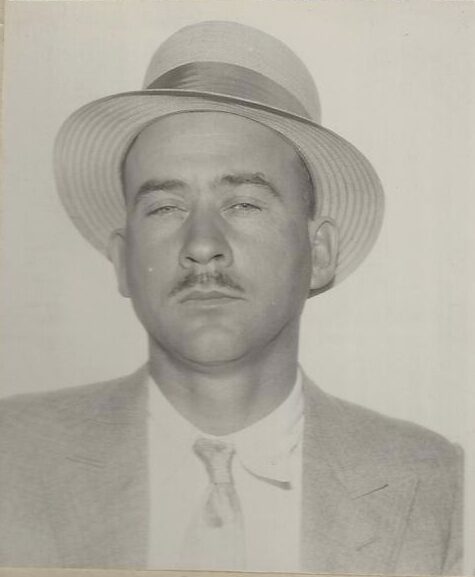
This fellow Weaver deserves a bit more attention because I firmly believe he is the reason the Barkers came back to the Ozarks. I had known for some time that he had connections to Mammoth Spring, Arkansas, on the Missouri state line. I did some searching in cemeteries, and online, to no avail. One day, I typed one of his aliases into the computer and found he was buried in Riverside Cemetery, there in Mammoth Spring. It turns out his real name is Phoenix Donald. He was born in Little Rock, Arkansas, and moved to Mammoth with his family at an early age. Other than his parents, I found two sisters. His father and mother died before he became a notorious Barker Gang member. They and one sister are buried in the same cemetery.
TROUBLE ON THE MOVE, AGAIN
By June 1931, Ma Barker was keeping company with an unemployed sign painter named Arthur Dunlop, and was ready to flee the continued police “harassment” of her “sweet, innocent boys.” She moved the family to the small Missouri town of Thayer, just across the state line from Mammoth Spring.
The sleepy border town of Thayer was probably chosen because of Phoenix Donald’s family ties to the area. The house they rented was just down the road from one of Donald’s sisters, and his other sister happened to be married to the sheriff of Fulton County (just across the line, in Arkansas), W.T. Bowlin, who served one term from 1931-1932.
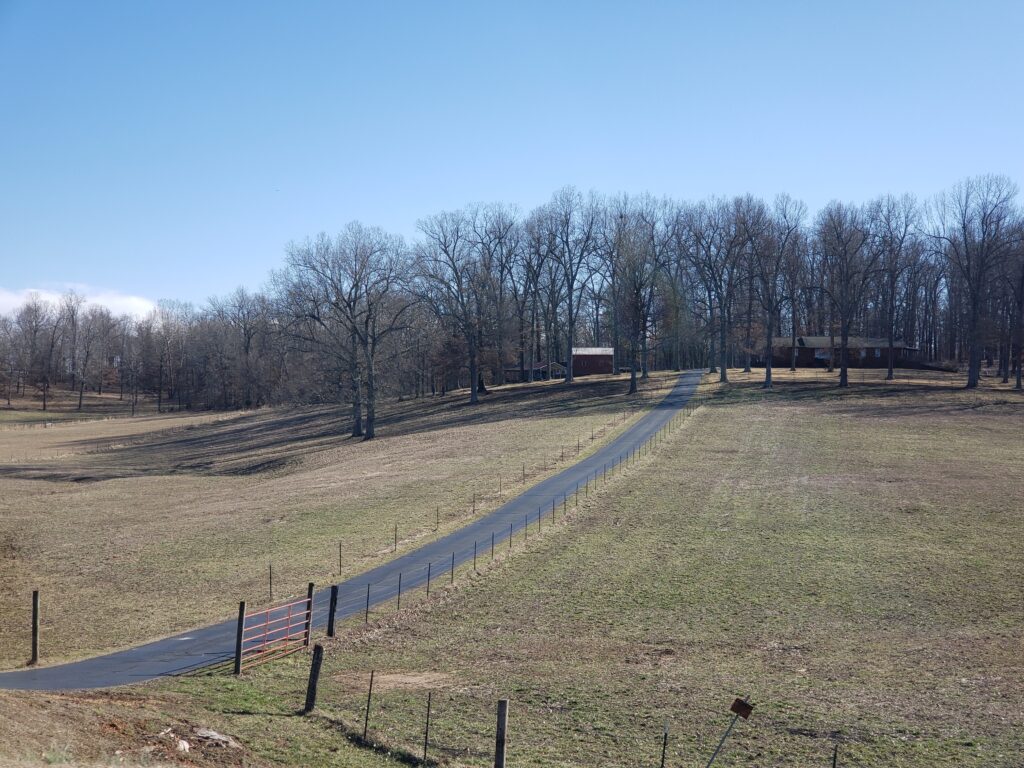
Ma and Freddie Barker, and Ma’s companion, Arthur Dunlop, settled into their new place. It was an excellent hideout. The house was set back from the road and had a long, open driveway, up the ridge to the house. The driveway was gated with an alarm that rang in the house when the gate was opened.
They were joined by a fellow we haven’t met, yet—Alvin Karpis. Karpis was a friend of Freddie’s from their time in the state penitentiary in Leavenworth, Kansas. He was born to Lithuanian parents who lived in Canada and moved to the U.S. while Alvin was young.
It did not take long for Alvin to find his niche in life — stealing. He partnered with an alumnus of the Central Park Gang, Lawrence Duvall, in a burglary spree, until they were arrested and sent to the Kansas Pen. Alvin soon became one of Ma’s boys.
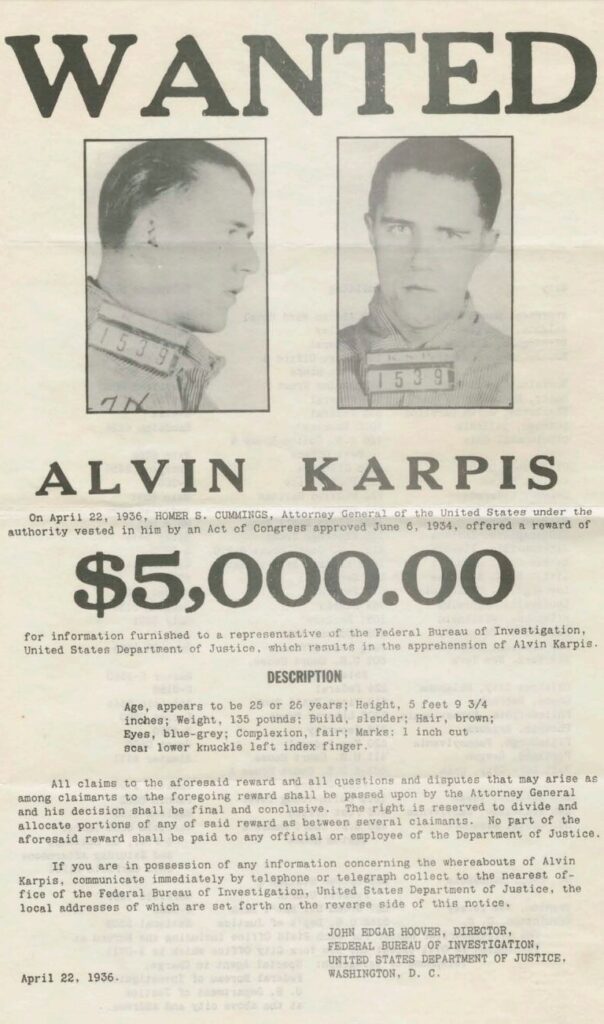
Phoenix Donald lived just down the road with one of his sisters. The guys enjoyed a brief respite, but soon realized they needed to “get back to work.” They didn’t want to do any jobs in their own backyard, so Freddie, Alvin, and Phoenix traveled about 170 miles northwest of Thayer, and began scouting banks to hit in the small towns west of Springfield, Missouri.
AN AUTO THEFT, AND A MURDER
On the night of September 21, 1931, Night Marshal Elisha L. Hagler was on foot patrol, keeping the town of Monett, Missouri, safe. Hagler was fairly new to law enforcement. He was a pharmacist by trade, and had owned his own drug store. His wife had passed away in 1921, and left him to raise their three daughters. The Depression caused the loss of his pharmacy, so his friend, the chief of police of Monett, hired him as night marshal.
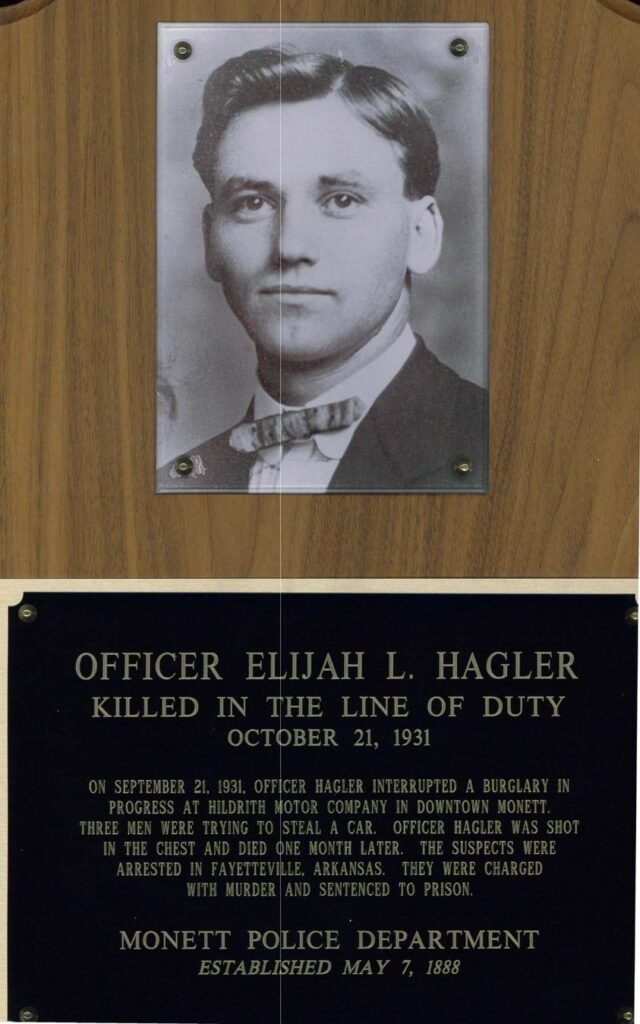
As he walked past the Chevrolet dealer on this quiet night, he saw a couple of men pushing a car out of the showroom. He drew his revolver and instructed the men to raise their hands. They complied, but the one steering the car, whom Hagler had not seen, shot the marshal in the chest. The three men—likely, Freddie Barker, Alvin Karpis, and Phoenix Donald– fled the scene.
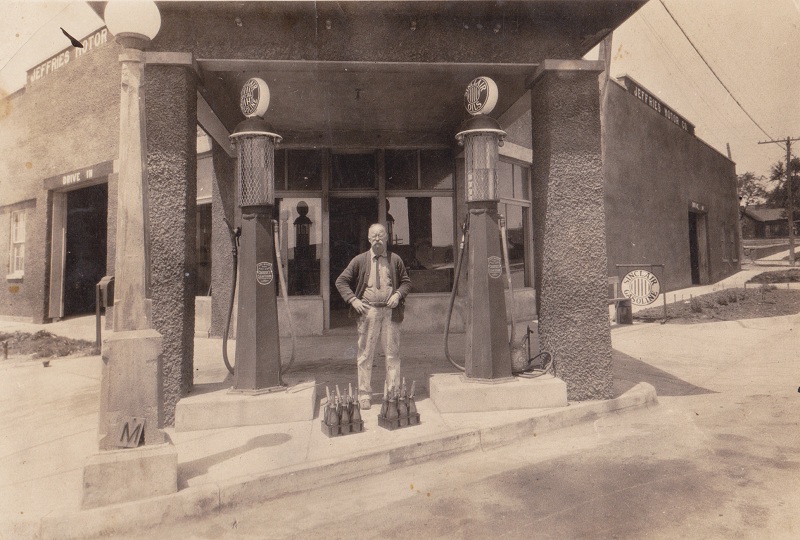
Based on faulty testimony, two men from north Arkansas were arrested for the crime, tried, convicted, and sent to the Missouri State Pen. It would not be until Karpis’ autobiography was published, in 1971, that the real killers were identified.
Tragically, Marshal Hagler was left a quadriplegic by the gunshot wound, which severed his spine. It seems that medical care had not advanced enough at the time to feed someone with that sort of injury, and Mr. Hagler died of starvation on the 21st of October, leaving behind his three daughters.
A BANK JOB, AND A MURDER
Since their efforts were not successful in the west, the trio of outlaws decided to go northeast 54 miles, to the town of Mountain View, Missouri, for their next job. At 3:00 a.m. on October 7, they broke into the bank and settled down to await the arrival of the bank staff at opening time. When the staff arrived, they were met by the three bandits, who forced them to open the vault. They took $13,000, and forced the staff into the vault, but did not lock them in. The gang threatened to hurt them if they didn’t wait in the vault long enough for the gang to get away.
You might think $13,000 would keep a family of five for a good spell, in 1931, when the average annual income was only $1,850, but I guess those folks were just greedy, and loved to steal.
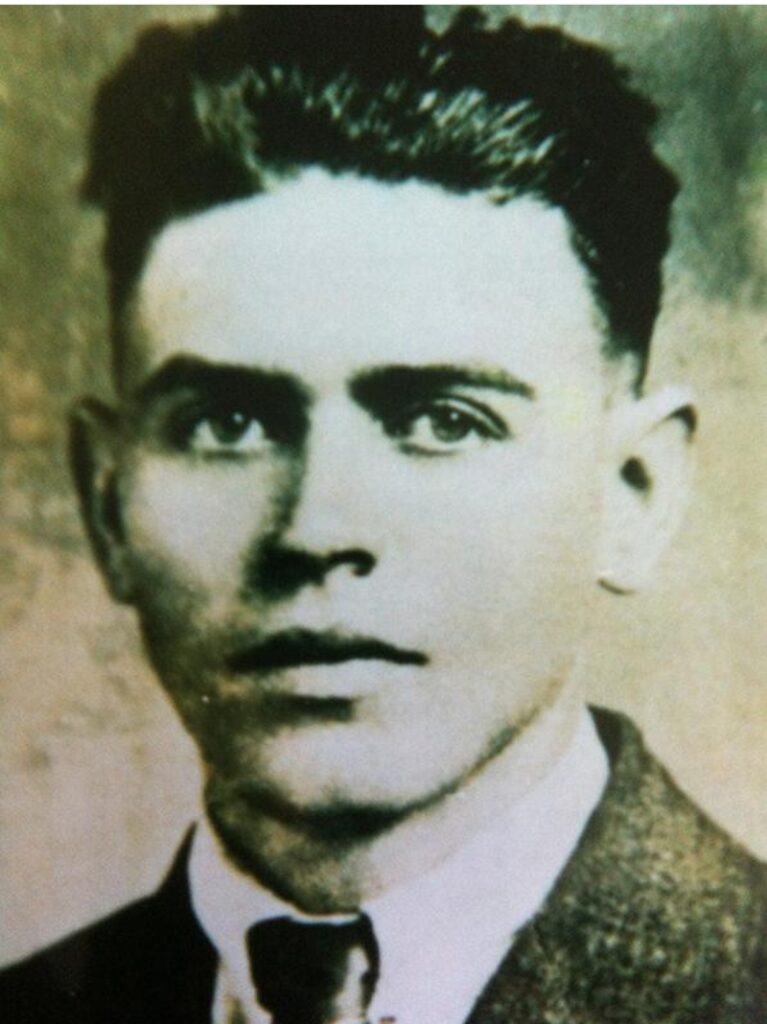
In what seems like deja vu, on the night of November 8-9, in a town 56 miles to the southeast of Thayer, Night Marshal Manley Jackson was on foot patrol in the business district of Pocahontas, Arkansas. As he passed the court square, he noticed a suspicious, parked vehicle. In Pocahontas, as in other small towns in the Ozark, the sidewalks are “rolled up and stored” until morning — some still are.
While Marshal Jackson was writing the vehicle license plate down in his notebook, he failed to see or hear a figure coming up behind him. That person stuck a gun in his back and took him prisoner, forcing him into the car.
The next morning, a local couple were headed down the highway coming into Pocahontas from the northwest, when the husband pulled the car over to the side of the road to allow the missus to answer a call of nature. As the lady walked into the edge of the woods, she came upon the dead body of Night Marshal Jackson, who had been shot five times with a .45 caliber pistol.
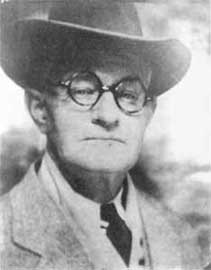
Marshal Jackson left behind a wife and two daughters. An investigation was started, along with a coroner’s jury, of which one of the members was my great uncle, W. H. Perrin, a long time Randolph County law enforcement officer. In short order, a local man confessed to the crime, named his accomplice, and said they were hired by the city marshal to kill Marshal Jackson. Again, the suspects were tried and convicted, and received jail terms, even though they hadn’t actually committed the crime.
It might seem strange that the wrong men were locked up for both the Hagler and Jackson murders, but just like today, prosecutors (and sometimes law enforcement officers) were sometimes quick to judgement, and wanted to close cases. The easiest answer is not always the right answer. I think this happened a lot in the past, but, fortunately, things improved with advances in investigative techniques and technologies.
A COMMERCIAL BURGLARY, AND A MURDER
After all these night time expeditions, our three criminals realized the temperature was dropping and winter was fast coming to the Ozark. It was time to prepare. On the night of December 17, a professional and selective band of burglars struck McCallion’s Clothing Store, on the court square, in West Plains, Missouri. West Plains was a trade center for a large area, and was only 27 miles north of Thayer. The stolen items were all carefully selected by size and quality—the thieves took only the best of everything.
A friend and fellow history buff, Mr. Joe Smith, related a story about the burglary from his grandfather. The grandfather, Mr. Smith, ran a ferry east of Mountain Home, Arkansas, for crossing the North Fork River. In the fall of 1931, a new, blue-colored, DeSoto was driven onto the ferry. Mr. Smith set the ferry in motion and went forward to visit with the driver, as was his habit. The man turned away, making it clear he had no desire to visit. Mr. Smith began to walk back to his post on the ferry, and glanced in the rear seat, where he saw a Thompson submachine gun. He later learned his passenger had been Alvin Karpis.
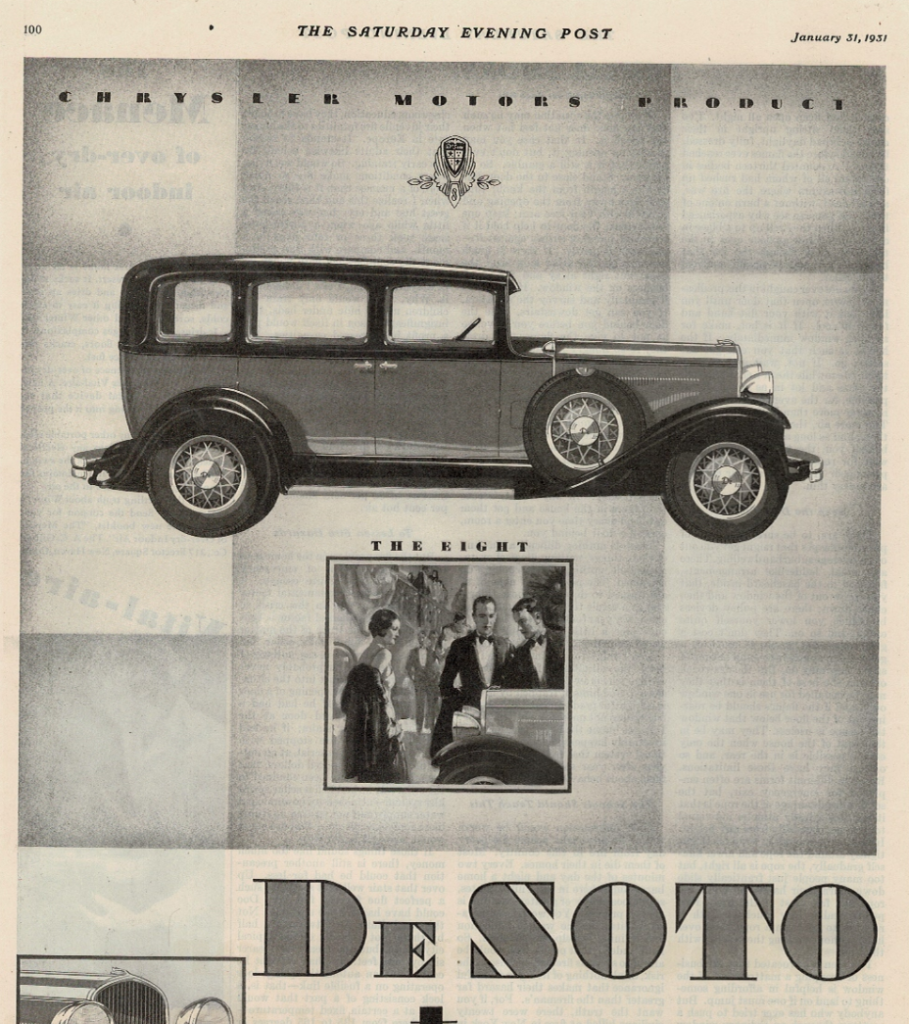
This same blue DeSoto was driven into Davidson’s garage on the morning of December 19th. It was occupied by three men. The owner of the garage went up to the car and learned that they needed two flats fixed. As he stood by the car, he saw several items of winter clothing with tags on them that appeared new. Thinking the men might be connected to the burglary of a couple of nights earlier, he had his employees begin the job, while he walked out to find an officer.
He saw Howell County Sheriff Calvin LeRoy Kelly walking down the steps of the post office. He raced across the street to share his suspicion with Sheriff Kelly. The Sheriff was known to not carry his gun all the time. He walked over to his car to pick up his revolver, in its holster, and put it inside his coat, in a chest pocket.
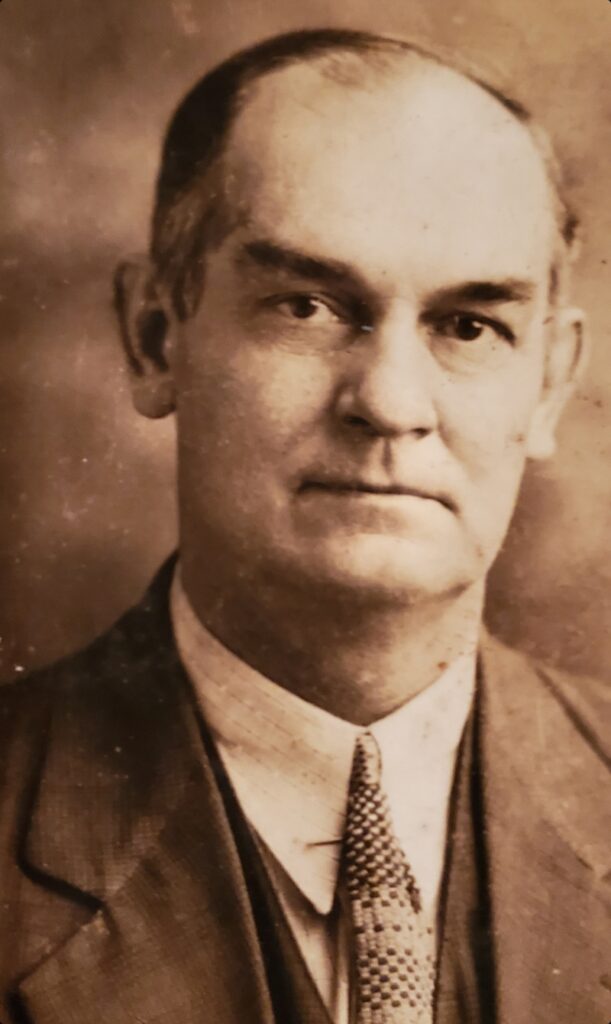
The sheriff entered the garage, and approached the DeSoto and the stranger standing beside it. I don’t know if his badge was visible (I doubt it—it was probably under his coat), or if one of the employees greeted him as “Sheriff,” but the men immediately recognized him as a law enforcement officer, and two of the three began to draw handguns, as did Sheriff Kelly. Unfortunately, they were faster. Both of the gunmen fired multiple rounds at Sheriff Kelly, killing him almost instantly. One of the killers jumped into the auto and fled, and the other fled on foot. The third man in the group was detained by a crowd, and almost became a victim of vigilante action, before he was able to convince them that he was just an innocent hitchhiker from Paragould, Arkansas.
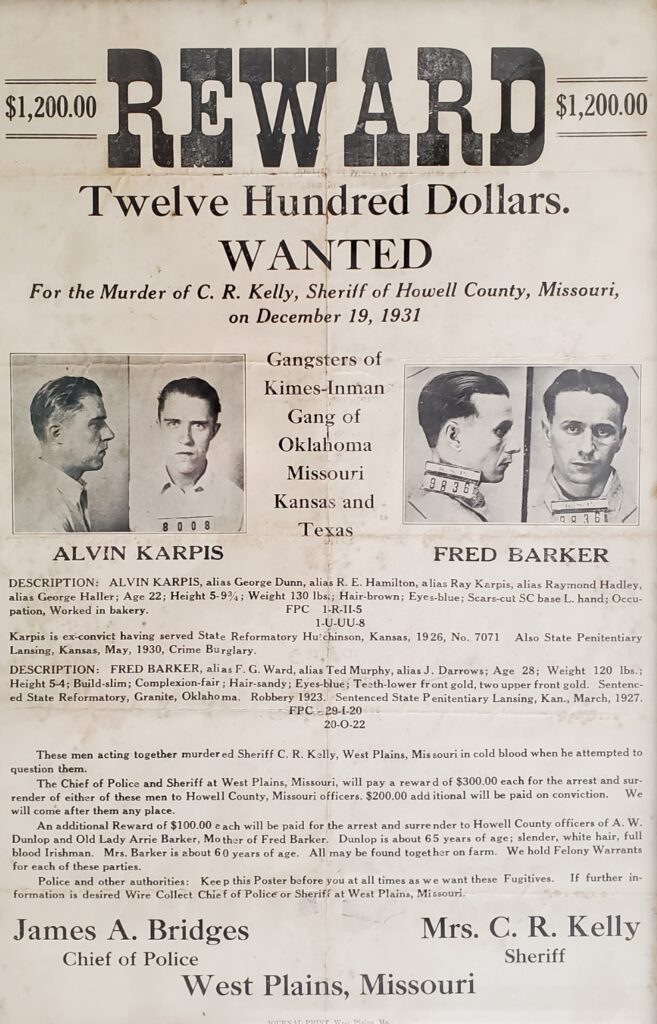
ESCAPE AND MANHUNT
An intense manhunt followed, and clues led to the house in Thayer, which was raided. No one was there, but letters, photographs and other items identified the former inhabitants as the Barker Gang. Karpis allegedly stayed behind and watched the raid from the woods, then walked across the state line, and stole a new Ford at the dealership in Mammoth Spring, to make his getaway.
The Barkers allegedly sought help at the home of Herbert “Deafy” Farmer, near Joplin, Missouri. Farmer and his wife were later charged with conspiracy in the Union Station Massacre.
Many speculate the Barkers went on to a new hideout in Saint Paul, Minnesota. Saint Paul was considered a safe city for criminals, much like Hot Springs, Arkansas, was at the time.
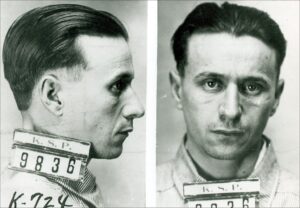
There is some speculation that Freddie Barker was present in a home on the outskirts of Springfield, Missouri, when it was raided by a joint posse of the Greene County Sheriff’s office and the Springfield Police Department. The Young brothers were wanted for numerous crimes, including the murder of Republic, Missouri, City Marshal Mark Noe. The shootout that occurred during the raid left six officers dead and four wounded. It is tied with a Colbert County, Alabama, shooting, that also claimed lives of six officers in 1902, for the most officers killed in a single shootout.
SAINT PAUL SPREE
When they did make it to Saint Paul, the Barkers were involved in several large scale, violent bank robberies that resulted in the death of numerous law enforcement officers. Oftentimes the Barkers were joined on bank robberies and shooting sprees by other well-known criminals, such as Frank Nash and Lawrence Duvall. Also, during their time in Saint Paul, Arthur Dunlop had begun to get on Ma’s nerves so much, that his body was found in a local lake, one morning.
While in Saint Paul, the Barkers tried a new form of criminal activity–kidnapping and ransoming a victim for large sums of money. During their time in Saint Paul, they pulled off two successful kidnappings. Their victims were William Hamm, of Hamm Beer fame, and Edward Bremer, a banker.
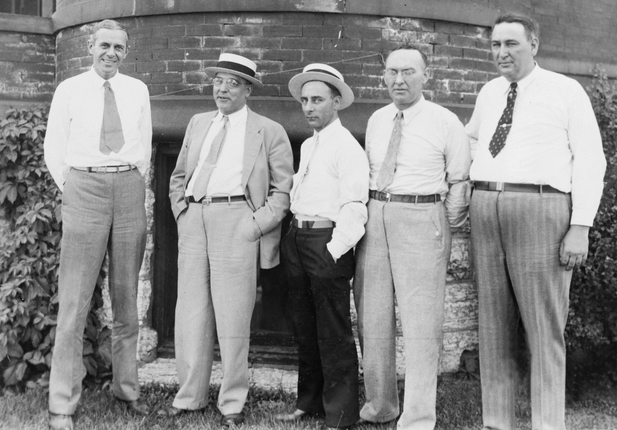
A very high-profile kidnapping had occurred, in 1932, of famed aviator, Charles Lindberg’s son. The child was killed during the course of the crime. That brought about new laws that made kidnapping a federal crime. Now the weight of the Federal Bureau of Investigation was on the trail of the Barkers.
The first to fall was Doc, who had rejoined the family business. He was captured in Chicago, and leads from his arrest sent the FBI to the Ocala, Florida, area, with info that Freddie, Ma, and others had rented a house there.
LAST BARK
Agents flooded the area and found the house. A raid was launched on January 16, 1935. Agents surrounded the house and commanded the occupants to exit. Gunfire broke out from inside the house, and started a four-and-a-half-hour gunfight that saw 2,500+ rounds fired. When the shooting stopped, the FBI sent in a handyman, who had worked for the Barkers, to see if they would surrender. He shouted out, from an upstairs window, “They are all dead.”
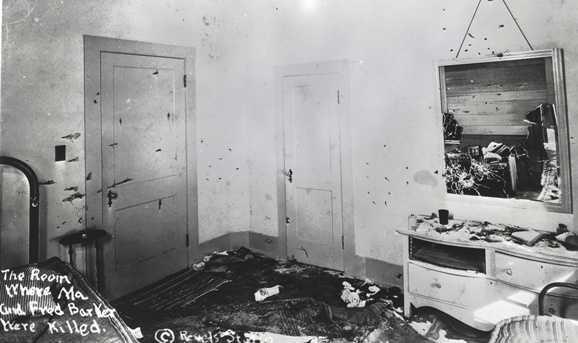
Freddie and Ma were on the floor of one of the upstairs bedrooms. Both reportedly had Thompsons lying beside them–Freddie’s with a 50-round drum, and Ma’s with a 100-round drum.
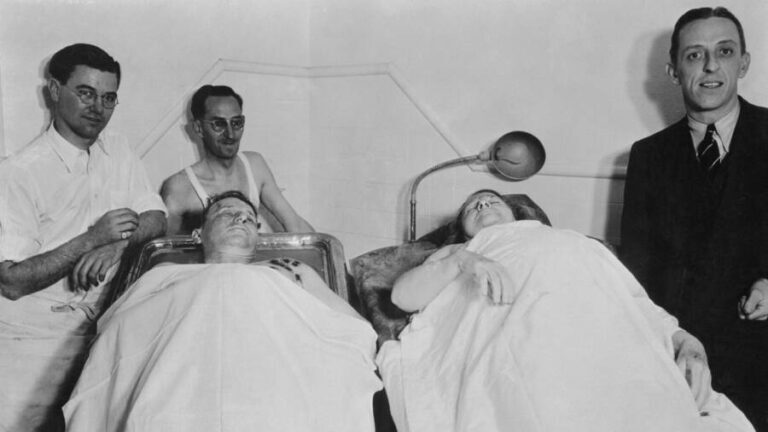
It makes you wonder how Ma handled that heavy gun? It’s possible that it was planted, because J. Edgar Hoover was worried about the perception of the FBI killing a little old lady. His press agent painted her as a dangerous criminal mastermind–one that led her boys on a deadly, nationwide crime spree. But criminals that knew her said she just followed her boys around. One associate said, “Ma couldn’t even plan breakfast. She just liked to listen to Amos and Andy, and hillbilly music on the radio.”
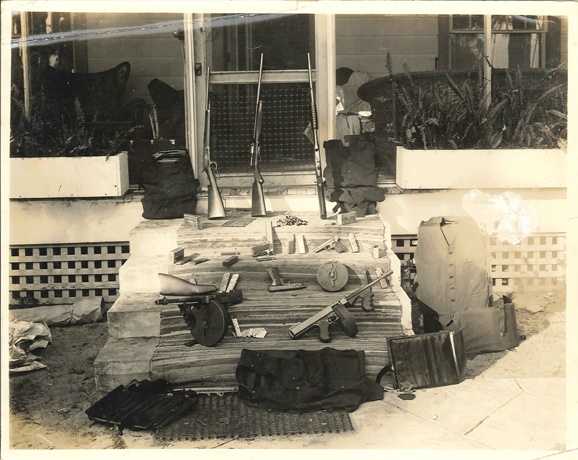
TYING UP LOOSE ENDS
With Fred and Arrie (Ma) Barker gone from the scene, along with Doc, Alvin Karpis and the other gang members found themselves in the gunsights of law enforcement.
Phoenix Donald and his girlfriend Myrtle Eaton were arrested near Allendale, Florida where they were operating a chicken farm. Agents recovered an arsenal from their farmhouse. Sound familiar?
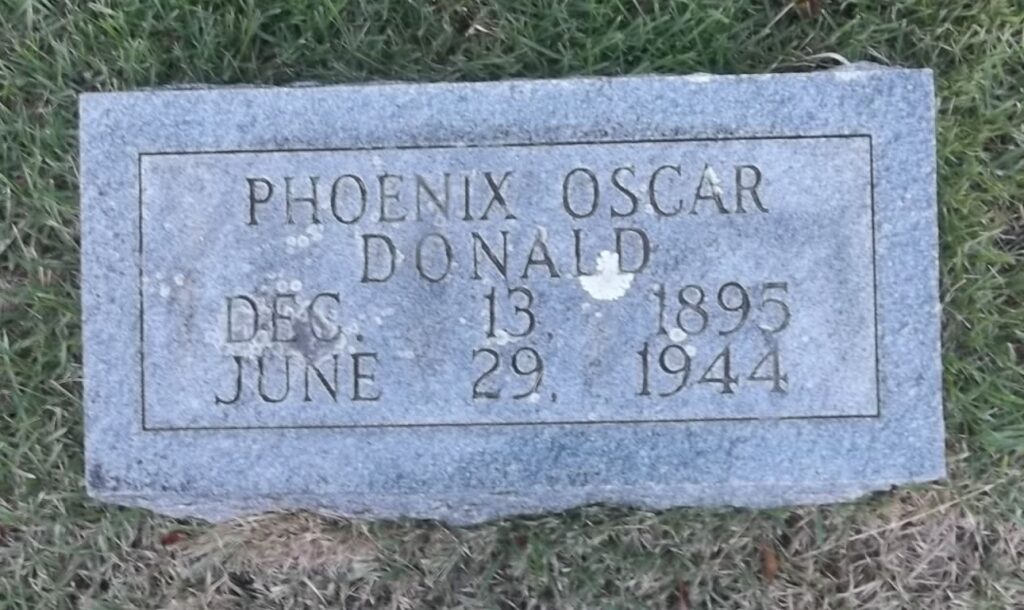
Hoover was attending a hearing in Washington, D.C., probably a budget committee, when he was grilled by a Tennessee legislator as to whether or not he had actually made an arrest himself. Hoover timidly admitted he had never arrested anyone. After this embarrassment, Hoover gave instructions to all the field offices–if Public Enemy Number One, Alvin Karpis, was located, they were to call headquarters. J. Edgar would be there shortly to make the arrest himself.
Karpis was located in New Orleans and Hoover flew down for the party. When Karpis exited the apartment to get in his car, he was surrounded by armed agents. Supposedly, one called out, “We’ve got him Chief!” and Hoover came around the corner for the arrest.
All the boys were convicted and sent to Alcatraz for the kidnapping. Ma and Freddie went to Timberhill Cemetery to join Herman.
In 1939, tired of the chow on the island, Doc joined some other fellows in an escape attempt. His obituary said, “shot and killed in prison break.” He didn’t make it to Timberhill, he stayed in California.
As mentioned, Lloyd, who had remained a good citizen after his one crime, was coming home from work when his wife killed him. She went to an insane asylum and Lloyd was buried in Colorado.
Alvin Karpis served until 1969 and was paroled. He was then deported to Canada, because of his illegal alien status (the old days when that law was enforced). He soon moved to Spain, to work on his autobiography with assistance from a fellow named Bill Trent. The book was published in 1971. In it, Karpis said that Freddie and Phoenix had committed the Hagler and Jackson murders, and the wrong men had been jailed for them. Of course, Alvin was aware that there is no statute of limitation on homicide, so he left himself out of the story–he was not there, you see, he was sitting at home with Ma, eating cornbread and beans, and listening to Amos & Andy. We know better—there’s little doubt he was the third man at each of the crime scenes.
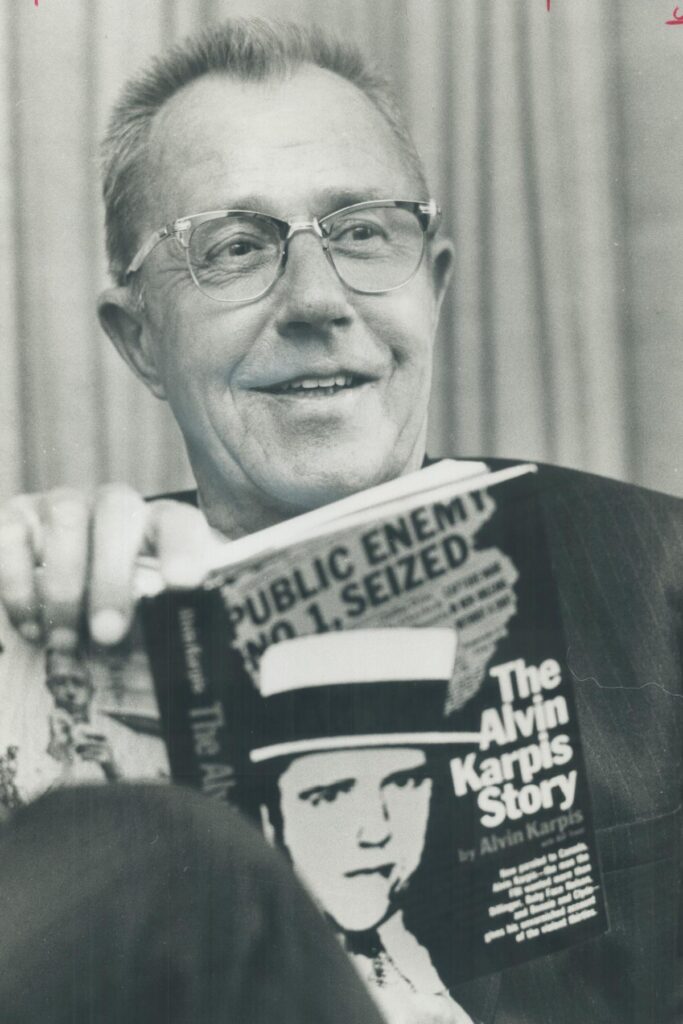
Karpis also said that it was Phoenix and Freddie that shot Sheriff Kelly. Like Freddie, Phoenix was beyond earthly punishment by this time. He had died of a heart attack in Alcatraz in June of 1944. The Feds shipped him back to Mammoth Spring and there he remains with his family. I haven’t found any more information on his brother in-law, Fulton County Sheriff W.T. Bowling. That will be another chapter to be uncovered one day.
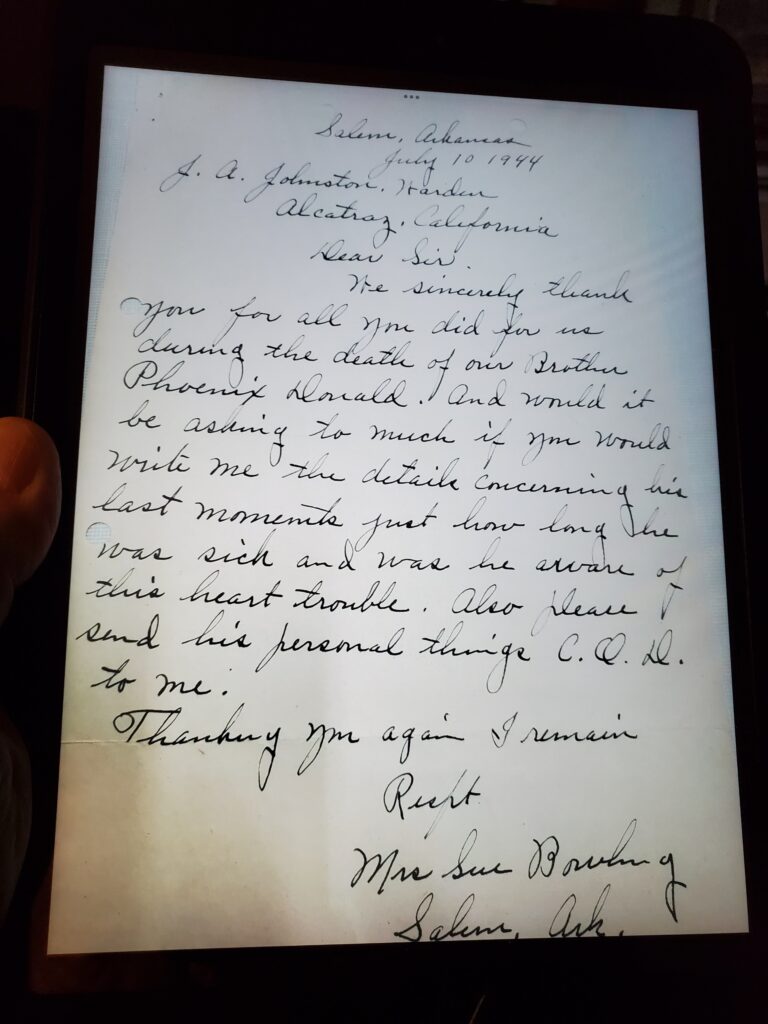
Alvin died of an overdose in Torremolinas, Spain on October 26, 1979. Some say it was an accidental overdose, some said suicide. Qui`en sabe?
REMEMBER THE LAWMEN, SAVE THE NATION
Sheriff Kelly was from Carter County, Missouri, where his father and uncle had also served as Sheriffs.
Marshal Elijah Hagler is buried in Monett, Missouri, Marshal Manley Jackson is buried in Pocahontas, Arkansas, and Sheriff Roy Kelly is buried in Van Buren, Missouri.
The names of the outlaws are widely known. The officers who gave their all for their communities are largely forgotten. Please remember them, and pass along their names, and let’s try to ensure that the 27,000-plus officers who have died in service to this country (and the additional hundreds of unknowns, who have been lost in the dusty pages of history) are always remembered.
Pray for our country and know that if the current crime war is not stopped, it is going to endanger the future of the United States of America.
Before closing, I’d like to say a special thank you to my wonderful wife, for typing up these stories. If it was left up to me, I would still be working on story number one.
Stay safe in this crazy world we live in! Law & Order, or Anarchy–we have to choose.
-Tony
*****
BOOKS
Helmer, William J., and Mattix, Rick, The Complete Public Enemy Almanac: New Facts and Features on the People, Places, and Events of the Gangsters and Outlaw Era, 1920-1940, Cumberland House Publishing, 2 Jul 2007;
Karpis, Alvin, with Trent, Bill, Public Enemy Number One: The Alvin Karpis Story, McClelland and Stewart, 1 Jan 1971;
Quincy, Myron J., The Devil’s Emissaries, A.S. Barnes, 1 Jan 1969;
Smith, W.D., The Barker-Karpis Gang: An American Crime Family, Kindle, 9 Dec 2016;
Videos
“Tony Perrin on the Barker Gang,” Baxter County Historical Society, available at: https://youtu.be/iR3IO_PosSw
credits
All images, except Star Tribune image of William Hamm, provided by the author.
POSTSCRIPT
What are the odds of two friends, finding two revolvers, that were carried by lawmen who were killed by the same criminals, in two different shootings, in 1931?
Way back in the early 1970s, there were a couple of young guys in northeast Arkansas that shared an unusual hobby–an interest in the history and artifacts of crime and law enforcement. That shared interest led to their meeting and a long-time friendship.
Both of them entered law enforcement in municipal departments. Their career paths led them to different and interesting jobs in LE. Retirement came around, after long careers, but their interest in LE history didn’t stop.
One of the guys had been chasing a particular artifact for a long time, and he recently found it, becoming its temporary caretaker. The artifact was the .38 S&W-caliber, Colt Police Positive revolver that Howell County, Missouri, Sheriff Calvin LeRoy Kelly was trying to draw, when he was shot down by Fred Barker and Alvin Karpis on the 19th of December, 1931. It even came with the original pocket holster that Sheriff Kelly used to carry it.
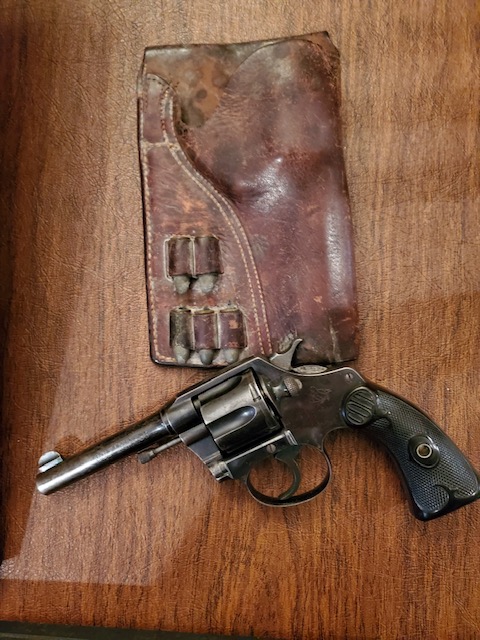
Several months later, the other fellow was given a similar opportunity to serve as the temporary caretaker for Albert Manley Jackson’s Colt Police Positive revolver. A distinctive feature of this revolver is the name, “Manley Jackson,” engraved on the backstrap, in period engraving.
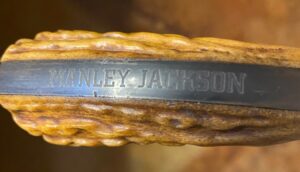
The revolver wears jigged bone grips–an aftermarket addition. It also came with its period-correct holster, and vintage police whistle. As with Sheriff Kelly, Marshal Jackson was shot and killed in the line of duty by Barker and Karpis (and Phoenix Donald), in November 1931.
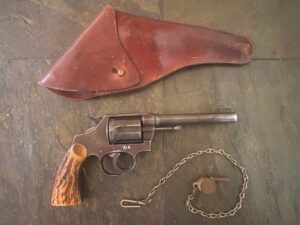
This revolver appeared in a box of stuff at an auction in at another town, in northeast Arkansas. The former owner kept the revolver for several years, and then passed the care of it to the present owner.
The line of ownership on the Kelly gun is traced through four owners since the sheriff was slain.
Jackson’s revolver, while undoubtedly his, requires a bit of speculation, as the research on its chain of custody continues.
One theory is that Jackson, like Kelly, had his revolver under his coat, and his killers did not bother to look for his weapon after he was killed. The revolver was recovered in a crime scene search, and remained at the sheriff’s department, until released at a later date.
Another theory is that the killers found the gun and took it with them, then left it behind, when they made their swift departure from their hideout house. The revolver would then have been recovered by Missouri authorities, and turned over to the Randolph County, Arkansas, Sheriff’s Department.
Perhaps future research will reveal more about this artifact of criminal history which hides its truth even better than today’s criminals. Meanwhile, the two old friends will keep chasing the history and artifacts of law and order, from long ago, and honoring the memory of the unsung officers who gave their all.

Today’s criminals “ain’t got nothin'” on the Barker Gang members. My God, what baddies!
There’s a lot to digest in this fabulous article, but one thing of note to me is Sheriff Kelly’s pocket holster fitted with five extra rounds for his Colt Police Positive. It corrects my misconception that pocket holsters are a new design.
Thank you for another captivating “The Day” tale, Tony. Thank you for remembering the good lawmen who perished pursuing the bad men of those days. Your stories always remind me that the evil our officers face today is not new, and the current batch of criminals aren’t worse than they were in times past. Your observations on J. Edgar Hoover’s actions are telling as well. Thank you again for your well researched account and the accompanying photos of a time gone by.
Tony,
Thanks for putting that all down for us to read and remember.
God Bless the Thin Blue Line.
Thank you Tony , you are a wealth of what would be forgotten history and information if not for your persistence.
Yours Truly,
Retired LRPD Lt. Nathan E. Tackett # 11817
Gentlemen, thank you for the kind comments I am glad you enjoyed the story about the Barkers.
The family and their associates caused many tears in the homes of their victims.
God bless you all and keep you safe.
Unless I’m missing something, today’s bad men and women don’t command the public’s (and the news media’s) interest and tacit support that many violent criminals of the late twenties and early thirties enjoyed, unless you factor in certain skeezy politicians.
Maybe it was the ugly mix of the Great Depression, high unemployment and extreme distrust in government that persuaded many prewar Americans to root for the bad guys and gals who stood up “to the man” and seized what they wanted.
Sadly, there’s plenty of that sentiment to go around, in some circles today. The soft on crime sentiment has resulted in all kinds of disastrous changes to the law, bail, etc. They call it “reform,” and in some cases, “reparations,” but it’s just an endorsement of crime and criminals.
No city appears to do “soft on crime” with such disastrous results like my burg, Portland, Oregon.
Ugh, I here ya buddy. We’re in a foot race with you, to see if we can beat you in this race to the bottom. Hang tough.
The good news is that more and more everyday Americans are waking up to the fact that their homes are being overrun. Eventually they will demand a correction. I just hope it’s soon.
Thank you for the reminder that criminals will always continue predation until put down.
That smirk on Alvin Karpis’s face makes me want to puke. At one time, criminals were hunted down and either captured (and put in prison) or killed. They were held in contempt by the public, and remembered only as the evil vermin they were.
Now, criminals are lauded as saints, given national victim status, allowed to go free and continue their predatory lifestyle on society.
Society has to make a choice, and right now the choices aren’t that swooft !!
Yes! We’re running out of chances to save this nation.
Thanks Tony. Really appreciate your efforts to document this Law Enforcement history. FYI, if you are ever in Cheyenne, WY, check out the Nelson Museum of the West. Among some of the great collections there, is a section devoted to the past Sheriffs of Laramie County. I had the privilege of working with some great Laramie County deputies during my career.
Thank you for the referral on the Nelson Museum K. M. I am sure I would enjoy that exhibit. Several years ago while I was a bit more active with collecting artifacts of law and order there was a dealer in South Dakota who was selling a large collection of artifacts that had belonged to long time Sheriff George Carroll . One item in it was the pistol that Herman Barker shot and killed Laramie County Deputy Sheriff Arthur E. Osborn with.
Stay safe.
Tony
Hey Mike, have you reviewed The Wrapid Loader System?
Hi Jeb! I have one, but was not impressed with it enough to review it.
Thanks for this story Tony. Despicable how many coppers these rats killed. Thank you for keeping the memories of the good guys alive.